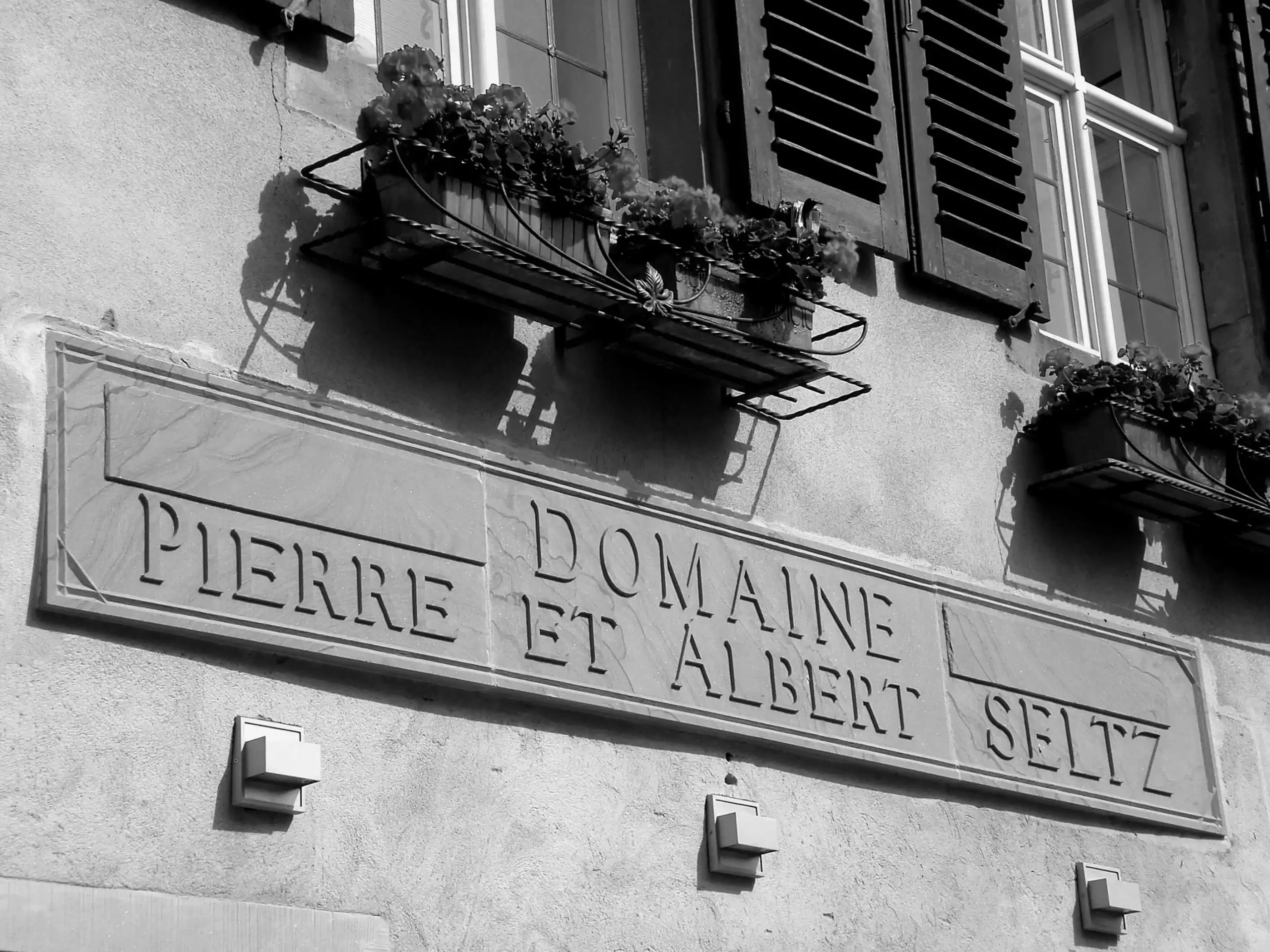

The Seltz tribe
FAMILY OWNERSHIP
Every bottle we produce is the fruit of meticulous work and scrupulous attention to detail. From vineyard to cellar, we follow a rigorous process to preserve the authenticity of our wines, respecting traditional techniques while incorporating the latest advances in oenology.
When you taste our wines, you’ll be transported on a sensory journey where delicate aromas, refined flavors and balanced structure combine to create a unique taste experience. Whether you’re a wine enthusiast or an experienced connoisseur, our cuvées will satisfy even the most discerning taste buds.
Beyond our passion for wine, we attach particular importance to preserving our environment. We adopt sustainable viticultural practices, promoting biodiversity and respect for the natural world around us. So, with every sip of our wines, you too can support an eco-responsible approach.
- Grand Cru appellation for Sylvaners
albert's road book
By coming to the Domain, we’ll be able to share our tasting
tasting impressions. Learn from each other. Wine isn’t complicated – you just have to
understand what nature is telling us.
MY INTERPRETATION OF HISTORY
Alsace is old and young at the same time.
In the 13th century, more than 100 wine-growing villages. Early 16th century 30 Years’ War 1618 to 1645 wars and famines lead to vineyards being uprooted to plant wheat. Alsace becomes German. Under Louis XIV, Alsace became French again in 1681.
It must be said that the locals were not in favor. In 1798, just after the French Revolution, Alsace was divided into departments. During the Napoleonic period, the area under vines increased to 30,000 hectares, almost doubling in size. 1870 the French Rhine wines reverted to German and took on the Prussian name of ALSACE.
We became French again in 1918. We returned to Germany in 1939. Creation of the AOC in 1935, adopted by Civa in 1962, which was founded in April 1963.
The different decrees
June 30, 1971 definition of quality rules
November 20, 1975 adoption of premiers grands crus
1976 Creation of Crémant d’Alsace
November 23, 1983 adoption of the other 25 Grands Crus
March 21, 2005 Sylvaner Grand Cru Zotzenberg
January 12, 2007 complantation and Kaefferkopff
The first Sylvaner Grand Cru 2005
THE SYLVANER
The village of Mittelbergheim IS SYLVANER. On the clay-limestone terroir of Zotzenberg, it expresses itself wonderfully, and has done so for over 80 years.
With the 1975 decree authorizing the first 25 Grands Crus, Mittelbergheim was unable to decide on Zotzenberg due to its lack of acceptance, proposing Brandluft instead, which was planted mainly with Riesling. Rejected for lack of precedence. It’s because of this programmed loss of identity due to winegrowing opportunism.
I’ve taken up arms against the authorities to protect the specific characteristics of a grape variety on a terroir that built the Mittelbergheim winegrowing tradition. That’s why I’ve built a window into the property wall, taken from Voltera in Italy, where I’ve marked the dates of the judgement of February 11, 2000.
All in the tribe
Discover the exceptional vineyard of our passionate winemaker. For generations, our family has lovingly cultivated grapes of incomparable quality. Steeped in tradition and innovation, our vineyard stands out for the richness of its terroirs and the diversity of its grape varieties.

Domain owner
Albert Seltz
The Alsatian-American winemaker Albert has often tried to make the best wines for the best medals.
The company’s policy is first and foremost to give sylvaner a place as a great wine, and secondly to make terroir wines that breathe salinity, a guarantee of longevity and culinary complicity.
He tries to pass on to his small tribe a passion for difference, without sectarianism.

Winegrower, Albert's son
Jérémy Seltz
Jérémy, 24, came into the family business out of conviction. Attentive, hard-working and determined, he is honing his skills.
The world is changing and we need to adapt while remaining ourselves,” he says.





















